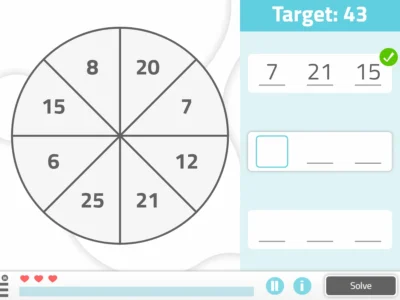In this article, neuropsychologist Ana Utrilla Lack addresses the most relevant aspects of attention-deficit/hyperactivity disorder (ADHD) in adults.
Introduction
Attention-deficit/hyperactivity disorder (ADHD) is a neurodevelopmental disorder, which implies that its symptoms must have begun before age 12. However, it is often not detected or diagnosed during childhood. For this reason, it is common in the neuropsychological clinic to find adult patients who present significant difficulties in organization and planning, as well as work, social, and relationship problems. When evaluated, these patients are diagnosed with attention-deficit/hyperactivity disorder, with or without hyperactivity.
What is ADHD?
According to the DSM-5 (APA, 2013), attention-deficit disorder is defined as a persistent pattern of inattention and/or hyperactivity-impulsivity that interferes with functioning or development.
According to the DSM-5 (APA, 2013), attention-deficit/hyperactivity disorder (ADHD) is characterized by a set of behaviors related to failures in attention, impulsivity, and/or restlessness, which are present persistently over time and at different moments in a person’s life.
These difficulties can influence how someone organizes themselves, concentrates, or stays calm, and affect areas such as work, studies, or personal relationships. As a neurodevelopmental disorder, its symptoms must have begun before age 12.
Sometimes, the diagnosis in childhood is not made because parents may have similar undiagnosed symptoms themselves or because family structure and support enable the patient’s functionality, among other factors.
However, in many cases it is not diagnosed during childhood for various reasons, among which are:
- Strongly normalizing or misattributing the symptoms to other factors, such as personality traits or normal developmental stages.
- Limited access to trained health professionals able to make the diagnosis at early stages.
- Compensation by the family or social environment, which masks the difficulties and delays diagnosis.
- The presence of comorbidities that may mask the disorder, such as other anxiety disorders, learning disorders, or mood disorders.
- Family resistance to accepting a diagnosis, since it often remains a ‘taboo’ subject.
Concept of ADHD
The concept and characterization of ADHD have undergone important changes over time. Its first appearance in psychiatric diagnostic manuals was in the DSM-III in 1980, where the term “attention deficit disorder, residual type” was introduced to describe ADHD symptoms that persisted into adulthood after a childhood diagnosis. In the revised 1987 version (DSM-III-R) this concept was removed; however, it continued to be used informally in clinical practice to refer to adults with persistent symptoms.
Later, in 2000, with the DSM-IV, the possibility of diagnosing ADHD in adults was recognized, provided there was evidence that the symptoms had begun in childhood.
Finally, in 2013, with the publication of the DSM-5, it was confirmed that ADHD can continue into adulthood. Adjustments were made to diagnostic criteria, allowing diagnosis with five (instead of six) symptoms in those older than 17. In addition, the term “residual” was formally removed, considering ADHD a disorder that can persist throughout life without the need for that label.
ADHD in adults
Attention-deficit/hyperactivity disorder (ADHD) in adults is characterized by difficulties in attention, impulsivity, and hyperactivity that persist beyond childhood, affecting daily functioning and quality of life. Similar to children with ADHD, adults experience impairments in various areas, such as interpersonal relationships and professional and academic domains (Sapkale & Sawal, 2023).
ADHD affects both men and women, although there are differences in its expression and diagnosis. It is more likely to be identified in boys and men because they often present more visible symptoms related to hyperactivity. In contrast, women tend to show predominantly inattentive symptoms and greater emotional instability, which can make early recognition more difficult.
Lesser-known symptoms of ADHD in adults
When talking about ADHD, stereotypical images often arise, such as imagining an restless child who does not pay attention in class. Therefore, it is sometimes difficult to visualize how this disorder manifests in adulthood.
As mentioned, ADHD symptoms are related to attentional failures and/or impulsivity and hyperactivity. However, due to the activities of adult life and the skills a person has acquired over time, symptoms and behaviors can present very differently from how they appear in childhood.
For this reason, many of the manifestations of ADHD in adulthood often go unnoticed, are misinterpreted, or even attributed to lack of motivation, stress, or personality traits.
Below are some symptoms that may be present in adults with ADHD and that are frequently not associated with this diagnosis:
1. Difficulty initiating tasks
It is common for a person with ADHD to identify with problems of procrastination because, despite being clear that an activity is important —and even having interest in it— they have a significant difficulty starting it and do not begin until time and pressure are upon them, finding in that stress a drive to finally start.
This paralysis or sensation of being “frozen” and unable to start tasks is not due to lack of will or discipline, but is related to an alteration in executive functions, which are linked to the frontal cortical area and are responsible for planning, organizing, and initiating goal-directed behavior.
2. Frequent forgetfulness of small or everyday tasks
No matter how regularly these tasks must be done. It is common for things like paying the electricity bill, locking the door, or picking something up on the way home to be forgotten, later generating much guilt and annoyance in the person and their environment. These forgettings are due to failures in working memory, which prevent sustaining attention on these tasks while carrying out other activities.
3. Problems with time management
Believing there is enough time to arrive somewhere or to complete all pending activities before leaving can be a frequent behavior in people with ADHD. This can lead them to be regularly late or, conversely, to arrive excessively early as a way to compensate, due to the stress caused by the possibility of being late.
4. Tendency to hyperfocus
At the opposite extreme to the constant inattention that many people with ADHD experience is hyperfocus. This involves periods of extreme concentration that occur with highly stimulating tasks, during which one can even lose track of time and neglect other important responsibilities.
5. Low self-esteem or feelings of inadequacy
As a consequence of the symptoms already mentioned, it is common for people with ADHD to develop a negative internal dialogue, convincing themselves they are lazy, disorganized, or incapable. This significantly impacts their self-esteem and self-concept.
Although inattention is often one of the most visible symptoms in adults with ADHD, it should not be forgotten that, in many cases, hyperactivity can also be present. However, it does not manifest in the same way as in childhood. Instead of constant or obvious physical activity, hyperactivity in adults often expresses itself in a more internal or subtle way, which can make it difficult to identify.
Below are some of these manifestations which, because they are less well known, frequently go unnoticed or are wrongly attributed to anxiety, stress, or simply a “restless character”. These are some common symptoms, although it should be borne in mind that they can vary, since each person has a unique profile.
1. Constant feeling of internal restlessness
Even when a person is seated and apparently calm, they may internally be experiencing a strong need to do something. That mental restlessness often translates into anxiety, impatience, or difficulty relaxing.
2. Speaking rapidly or interrupting frequently
Some people with ADHD may be seen as talkative who also change topics quickly or tend to interrupt conversations without ill intent, simply because they feel an urgency to say what they are thinking before they forget it.
3. Difficulty being still or enjoying rest
People with ADHD commonly report difficulty with “doing nothing” or activities such as sitting down to watch a movie or rest, even feeling discomfort and frustration.
4. Moving constantly in subtle ways
Playing with fingers, moving legs, changing position frequently, or even getting up to do something for no apparent reason.
5. Constantly seeking activities or stimulation
Frequently changing interests, starting many projects without finishing them, or having an overly busy schedule can be a way of managing the need to stay stimulated and avoid boredom.
6. Difficulty waiting
Low tolerance for waiting in lines, in traffic, or for others to finish speaking. This is not due to a lack of manners, but a real sense of urgency that is difficult to control.
7. Tendency to multitask
Although not always effective, many adults with ADHD try to do several things at once, as a way of keeping busy or avoiding the frustration of a single prolonged task.

Subscribe
to our
Newsletter
Neuropsychological assessment of ADHD in adults
Currently, access to information related to ADHD and its symptoms is greater, which, on the one hand, favors timely diagnosis, but on the other hand simplifies what this disorder entails and can lead to overdiagnosis. Therefore, if a person suspects they have symptoms of this disorder, they should consult the appropriate professional to carry out the necessary assessment and confirm or rule out that suspicion.
As neuropsychologists, the assessment we perform begins with a clinical interview. The aim of this is to understand the behaviors or symptoms that suggest the diagnosis, and a fundamental part is determining the onset of these, since, as mentioned above, although the disorder may continue into adulthood, the symptoms must have begun at an early stage, given that it is a neurodevelopmental disorder.
In addition, we seek to understand the current impact of these symptoms to assess whether they are clinically significant, that is, whether they are affecting various areas of the patient’s life. It is also necessary to carry out a differential diagnosis, ensuring that the symptoms are not caused by another disorder, such as anxiety, depression, or others.
Based on the information collected in the clinical interview, neuropsychological tests are required to make the diagnosis. The objective of these tests is to assess the patient’s performance on tasks mainly related to executive functions, in addition to other cognitive functions such as memory, language, and attention.
The choice of tests may differ depending on the patient and their particularities, what matters is being clear about the objective sought and that the tests applied align with it.
Some of the tests proposed by the Cantabria Foundation for the Aid of Attention Deficit and Hyperactivity (CADAH) (n.d.) for the neuropsychological assessment of ADHD in adults are:
1. Stimulus-tracking tests, such as the Trail Making Task (Reitan, 1958)
These tests are aimed at evaluating executive functions:
The Trail Making Task, in its B format, assesses the patient’s attentional and planning capacity. It consists of asking them to trace a path by connecting numbers in ascending order, or alternating numbers and letters (1-A-2-B…) sequentially. Although it may seem like a simple task, it can be a significant challenge for those who have difficulty directing attention or generating strategies.
This test requires maintaining concentration for a sustained period while alternating between different types of information, which provides valuable data about the patient’s ability to plan, sustain attention, and shift focus as the task requires.
2. Planning tasks, such as the Tower of Hanoi or the Zoo Map, part of the BADS test (Wilson et al., 1996)
As part of the assessment, planning tasks are also applied, such as the Tower of Hanoi, which requires generating a strategy to solve a specific problem while respecting a set of rules established from the start.
Another useful test is the Zoo Map, which I personally find very representative of everyday situations. In this task, the person is asked to organize a route through a zoo fulfilling certain conditions, which implies planning, prioritizing, and anticipating the steps to follow.
These types of exercises allow observation of how the person structures their thinking and executes a logical sequence of actions toward a goal.
3. Interference tasks, such as the Stroop Color and Word Test (Golden, C.J.)
Another frequently used test is the Stroop Color and Word Test, an interference task that allows evaluation of processes such as selective attention and inhibition of automatic responses. In this test, the patient is presented with a list of words that name colors (such as “red” or “green”), but printed in a different color than they denote. For example, the word “blue” printed in yellow. The task is to name the ink color and not read the word.
Although it seems simple, it involves a significant effort to inhibit automatic reading and focus on the given instruction, which can be a major challenge for people with difficulties in inhibitory control or managing impulsivity.
We can also use more comprehensive test batteries, such as the Neuropsychological Battery of Executive Functions (BANFE-3), developed by Ostrosky.
The assessment of ADHD in adults requires integrating different tools, among which are the neuropsychological tests mentioned. To obtain a precise and complete diagnosis, self-report scales and structured interviews such as the DIVA-5 can also be used.
This combination allows identifying the patient’s specific difficulties and guiding an appropriate intervention plan. The DIVA-5 clinical interview, based on DSM-5 criteria, allows exploration of the presence of symptoms characteristic of the diagnosis, as well as their intensity and the impact they have on the evaluated person’s life.
Effective treatments and strategies for adults with ADHD
Once a diagnosis of ADHD in adults is established, the next step is treatment, which should be multidisciplinary. In some cases, this includes pharmacological interventions overseen by a psychiatrist, whose main objective is to improve attention and reduce impulsivity. However, pharmacological treatment should be accompanied by neuropsychological intervention, in which, at the outset, specific goals the patient wishes to achieve are established together, based on their needs and the activities they perform at personal, social, and work levels.
As part of the neuropsychological intervention, specialized digital platforms can be used, such as NeuronUP, which offers personalized exercises to stimulate various cognitive functions, contributing to structured and adapted improvement of attention, memory, and executive functions for each patient.
In addition, the use of digital tools can be very helpful in daily life. There are applications like Todoist or Trello that facilitate task organization and management, and others like Headspace that support the practice of mindfulness and stress reduction, fundamental aspects for comprehensive ADHD management.
As mentioned above, ADHD can be accompanied by emotional symptoms such as anxiety or depression, as well as frequent feelings of frustration and low self-esteem, which, if not properly addressed, can interfere with treatment. In this regard, practices such as mindfulness have been shown to be helpful, as they contribute to improving emotional regulation, reducing stress and fostering greater present-moment awareness. Incorporating these types of tools can become a valuable complementary strategy within the comprehensive approach to adult ADHD (Crespo & Valero, 2019).
Conclusion
Although ADHD is usually mainly associated with difficulties, it is also important to recognize the strengths that can accompany this diagnosis. Many people with ADHD stand out for their creativity, ability to think divergently, energy and enthusiasm, as well as great resilience in the face of challenges. Their tendency to seek new experiences and their ability to hyperfocus on topics of interest can be valuable advantages in work and personal domains. Recognizing these qualities helps build a more complete and positive view, fostering self-esteem and a balanced approach to the disorder.
Early detection of ADHD in adults is key for people to understand what is happening to them and be able to seek the necessary help. Often, people develop compensatory strategies that help them manage day-to-day difficulties. However, these strategies do not always prevent their personal, work, and social life from being affected, especially when symptoms are not clearly identified. Therefore, a well-conducted diagnosis, accompanied by comprehensive treatment tailored to each case, can make a big difference.
Once the diagnosis is obtained, the next step is to begin appropriate treatment. The neuropsychologist plays a fundamental role in designing an individualized intervention plan that responds to the patient’s particular needs. This plan should address both behavioral and emotional aspects, aiming to promote quality of life and emotional stability.
In addition, it is important to promote an open and informed stance toward neurodiversity. Although there is currently greater knowledge about ADHD, stigmas and misconceptions persist that can limit the personal and work opportunities of those who experience it, also affecting their self-esteem. As a society, we can contribute to a more understanding environment by minding our words and the way we talk about ADHD, recognizing that the difficulties faced by people with this diagnosis go beyond willpower.
As a professional, I believe that understanding ADHD beyond its difficulties allows us to better accompany those who live with it and offer them the support they truly need to enhance their strengths and improve their quality of life.
Bibliography
- American Psychiatric Association. (2013). Diagnostic and statistical manual of mental disorders (5th ed.). Author.
- Crespo, M., & Valero, S. (2019). Mindfulness and emotional self-regulation in adults with ADHD: a systematic review. Revista de Psicología Clínica con Niños y Adolescentes, 6(1), 41-46.
- Fundación CADAH. (n.d.). ADHD: Instruments or tests to evaluate neuropsychological and executive functions (Part II). Retrieved from https://www.fundacioncadah.org/web/articulo/tdah-instrumentos-o-pruebas-para-evaluar-las-funciones-neuropsicologicas-y-ejecutivas-parte-ii.html
- Golden, C. J. (n.d.). Stroop Color and Word Test. [Manual].
- NeuronUP. (n.d.). Cognitive rehabilitation platform. Retrieved from https://www.neuronup.com
- Ostrosky, F. (year). Neuropsychological Battery of Executive Functions (BANFE-3). [Manual].
- Reitan, R. M. (1958). Validity of the Trail Making Test as an indicator of organic brain damage. Perceptual and Motor Skills, 8(3), 271–276.
- Sapkale, N., & Sawal, M. (2023). ADHD in adults: An overview of symptoms, diagnosis, and management. Journal of Psychiatry and Neuroscience, 48(1), 10-20. https://doi.org
- Wilson, B., Alderman, N., Burgess, P., Emslie, H., & Evans, J. J. (1996). Behavioural Assessment of the Dysexecutive Syndrome (BADS). Thames Valley Test Company.
If you liked this article about ADHD in adults, you will surely be interested in these NeuronUP articles:
“This article has been translated. Link to the original article in Spanish:”
TDAH en adultos: síntomas poco conocidos, diagnóstico tardío y tratamiento eficaz







 Scientific evidence of the impact of omega-3 on attention and cognitive performance
Scientific evidence of the impact of omega-3 on attention and cognitive performance
Leave a Reply